Firgas in Gran Canaria: a village brimming with springs and stunning landscapes
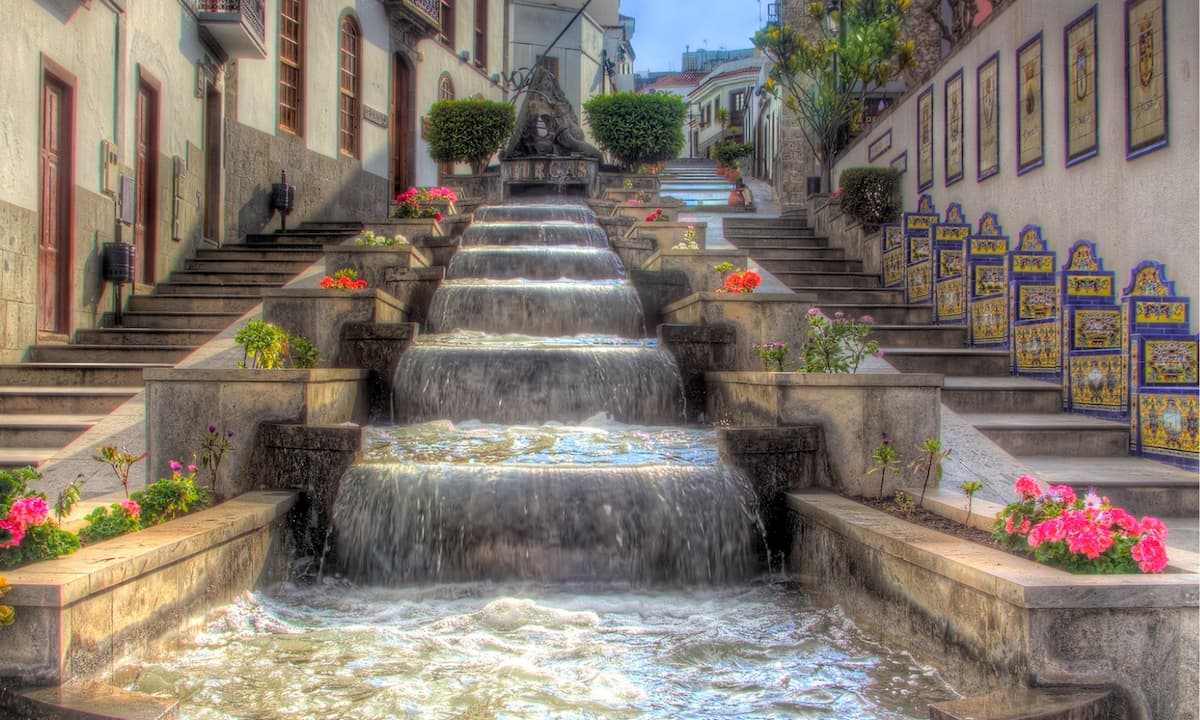
Ready to discover one of Gran Canaria’s hidden delights? Visit Firgas, one of the island’s most picturesque villages where water plays a starring role on a stage replete with nature, landscapes and traditions. We’ll take you on a journey through its historic quarter and reveal the best places to find its natural wonders.
Firgas, the water village
The municipality of Firgas lies just 20 minutes from the capital in the north, and is the keeper of many secrets. It’s the smallest town in the whole of Gran Canaria for example, and one of the eleven municipalities across all the Canary Islands that’s completely landlocked. But that doesn’t mean it doesn’t have any water – far from it!
The abundant mineral water gushing through its ravines, springs, wells and watercourses have deeply marked its history and economic development. The village is even known by the nickname ‘Villa del Agua’ (or water village).
This liquid treasure was already being harnessed by the ancient aboriginal people. Above all, they used it in agriculture – an activity of enduring importance throughout history in the area. In fact, some authors claim the name of the village comes from the aboriginal term ifri-gad (which translates as ‘underground mineral water passage’).
The close relationship Firgas has with water runs through its every street, idiosyncrasies, local produce (such as the famous watercress, a staple of Canary Island cuisine) and business activities. Household name ‘Agua de Firgas’ was set up in 1930, and is one of the archipelago’s most famous, well-known bottled water brands.
Firgas is also home to distinct culture, religion and traditions, as well as its own peculiar orography. Read on to find out which must-see spots to add to your list:
Paseo de Gran Canaria and Paseo de Canarias
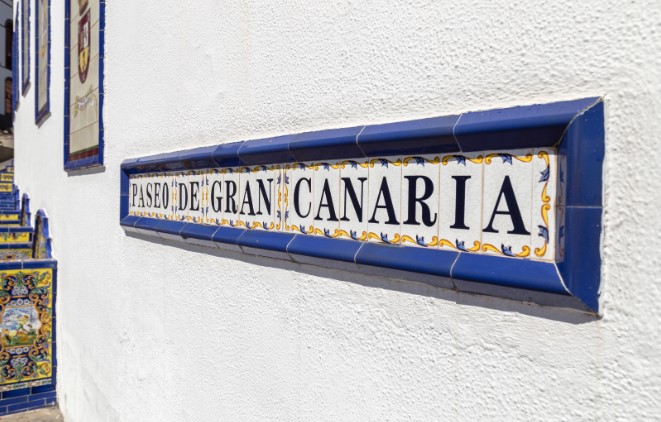
Your first mandatory stops are Paseo de Gran Canaria and Paseo de Canarias. Located in the epicentre of Firgas, this was where the canals of old crossed, and is now one of the most ubiquitous images to be seen on Gran Canaria postcards.
Both of the paths make up a pedestrianised route that stands out for its beauty and symbolic value alike. We recommend parking outside the village centre, and starting your trip from Paseo de Gran Canaria. There are steps down the natural slope, so you can walk alongside a beautiful, 30-metre long paved waterfall. As you walk down the street, look to the sides and you’ll see tiles representing the 21 heraldic shields of the municipalities of Gran Canaria, as well as the island’s crest.
Further up, on Paseo Canarias, you can take in the mosaics and reliefs symbolising each of the seven main Canary Islands. Throughout the length of the waterway, you’ll find all types of water infrastructures including mills, washing stations, reservoirs and passages, all shaping the Firgas landscape.
Casa de la Cultura
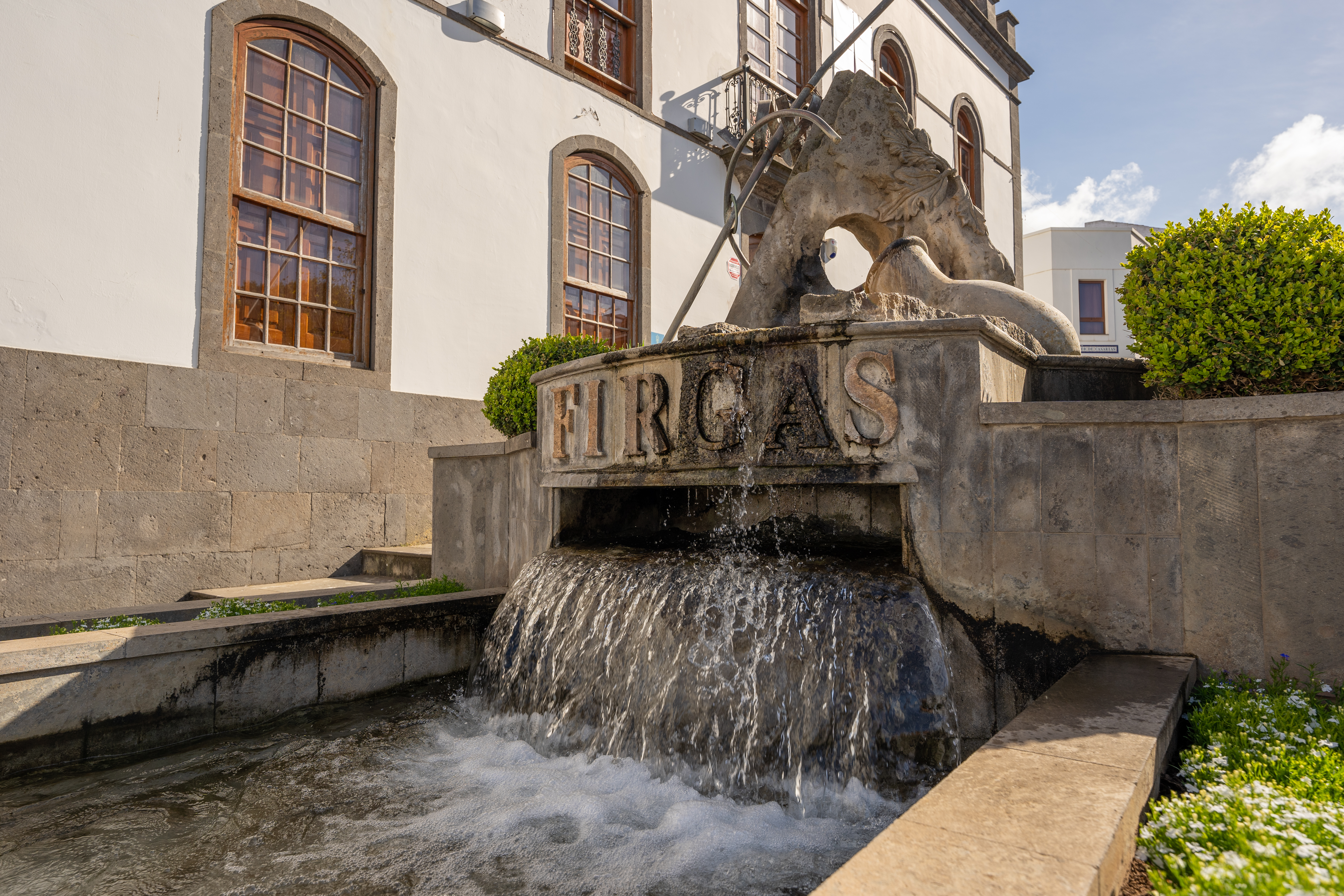
At the end of Paseo de Gran Canaria, on the left, you’ll come to the Casa de la Cultura, one of the municipality’s most iconic buildings. Built in 1870 as a hotel and inn, it offered lodgings to those travelling to Firgas in search of its healing waters: the ‘baños de Azuaje’ baths.
After being run by several owners, the building closed its doors during the Spanish Civil War. Over time, it has transformed into a multifunctional public space, and is currently home to – among others – the Municipal Library and an exhibition hall. The latter often holds temporary exhibitions by local artists, which you can visit from Monday to Friday between 9:00 and 13:00.
San Roque Square and Church
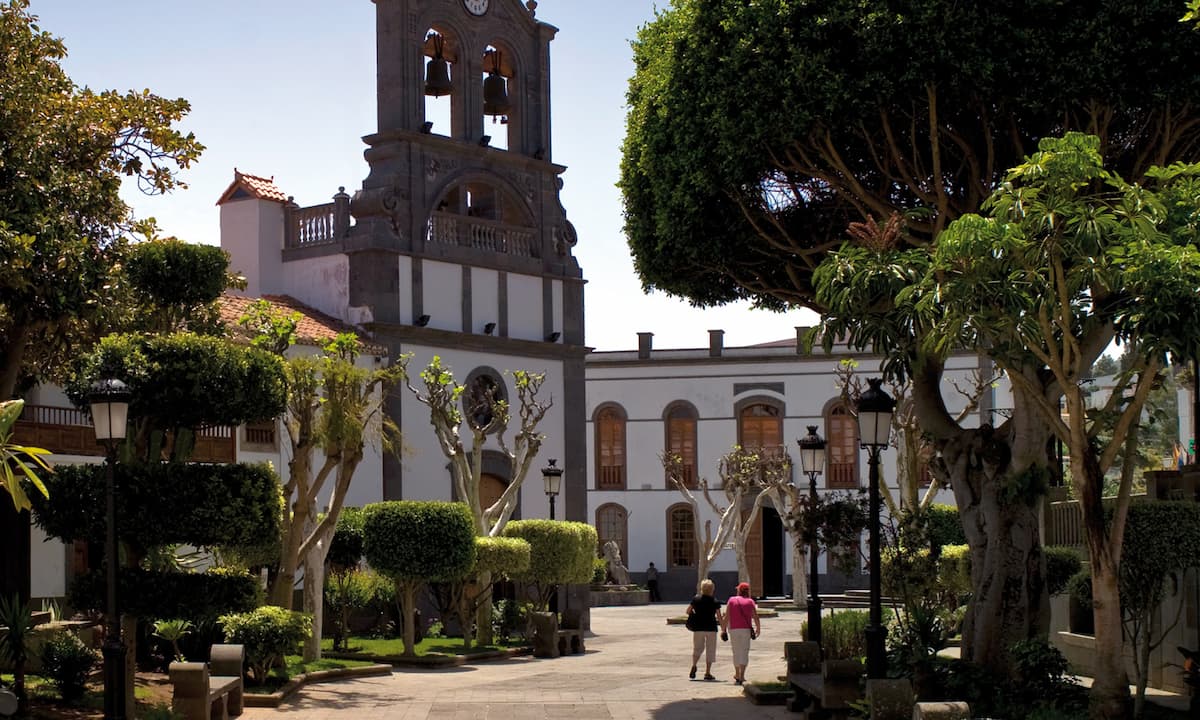
If you walk in the opposite direction of the Casa de la Cultura, you’ll come to the Plaza de San Roque, the beating heart of the municipality. Important buildings such as the Firgas Town Hall and Antigua Acequia Real are located around the square, which was where washerwomen would tend to their clothing in the olden days. In the park, you’ll also see a monument to San Juan Ortega who was the first patron saint of Firgas.
The church and Plaza de San Roque are in the heart of the village. The oldest fiesta in Firgas is celebrated in his honour, with the main event known as the ‘Traída del Palo’ (Bringing of the stick). The tradition consists of locals bringing a large wooden log, carried on their shoulders, from Firgas mountain to the entrance of the municipality.
Are you a hiking enthusiast? You’re in luck. There are 6 circular routes you can take, which start and end in the Plaza de San Roque. The routes are well signposted, you’ll see the letter ‘R’ (with each route in a different colour) along the routes, so they’re easy to follow whether you’re cycling or on foot. We recommend downloading the app at www.senderos.firgas.es so you can get all the information you need before setting off on your journey.
From here, you can take the Ruta de Aumastel or Azuaje, Ruta del Agua or Mil Fuentes, Ruta del Pico el Rayo, Ruta de Afurgad, the accessible Ruta Accesible and the ethnographic and architectural Ruta Etnográfica y Arquitectónica.
Museo del Gofio
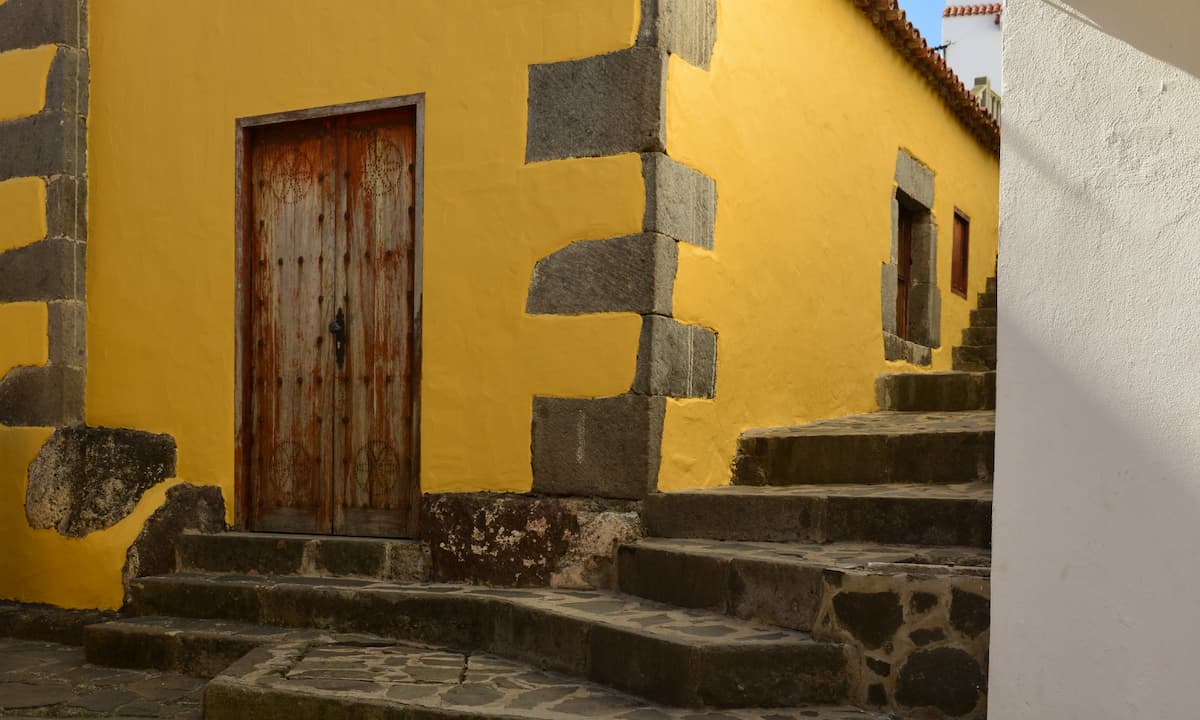
Another essential stop-off that represents town’s vibrant history is the Molino de Firgas, also known as Molino del Conde: a watermill. It was built in 1517, and is the oldest watermill in the Canary Islands that’s still in use today.
Located on the Heredad de aguas de Arucas y Firgas canal, this historically significant mill was declared an official ‘Asset of Cultural Interest’ by the Canary Island Government in 2007. The Gofio Museum is housed there, and you can see how the ‘gofio’ meal is ground and toasted.
Firgas Tourist Office is also located there. It’s open from Monday to Friday from 8:00 until 13:30, and you can get tourist information about the municipality itself as well as the rest of the island.
Next to it, you’ll see a statue by sculptor José Luis Marrero Cabrera, known as the Monumento al Ganadero. This statue represents a farmer with his cow, giving recognition to all the people who helped the agricultural sector in Firgas.
Hiking in the Barranco de Azuaje ravine
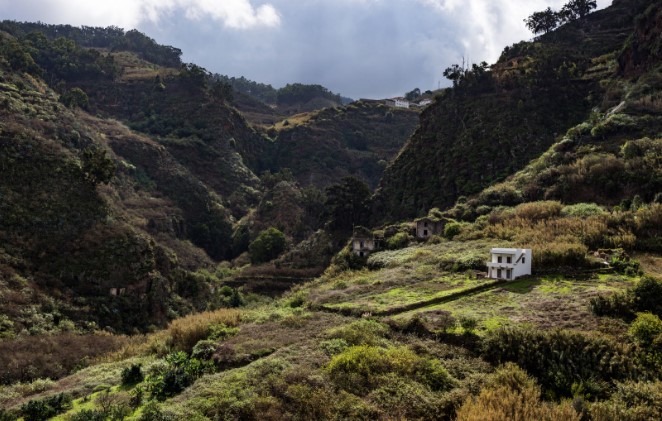
Azuaje ravine is one of Gran Canaria’s lushest, greenest routes. The abundant local vegetation led it to be awarded a Special Nature Reserve distinction. Get your trainers on, grab your backpack and take a walk through this spectacular landscape. Read on to find out how!
The circular route spans around 8.1 kilometres, setting out from the Plaza de San Roque. It takes around 4 hours and is a medium-high level of difficulty. If that sounds too challenging, there’s an easier, more family-friendly route you can take from the Balneario Azuaje.
This former spa was built in 1868, but all that remains today are the ruins of a hotel that was once a Canary Island tourism hotspot. Until it closed, tourists from the world over would come in search of the mineral-healing properties of the water springs coursing through the ravine, turning Firgas into an idyllic place of healing and rest.
Firgas viewpoints
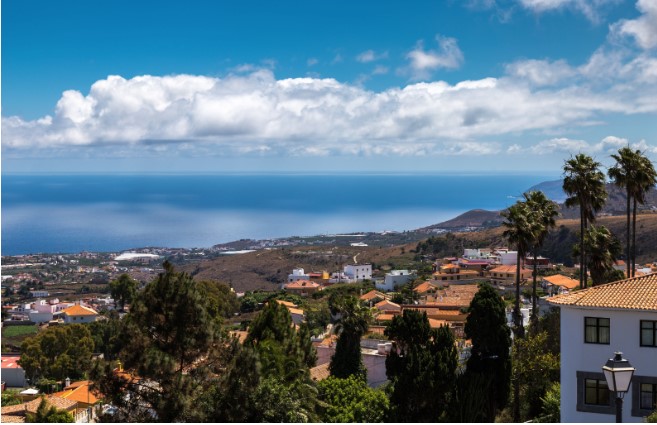
If you’d like to admire the beautiful Gran Canaria landscape, Firgas certainly won’t disappoint, with several viewpoints offering awe-inspiring vistas.
The Mirador Plaza San Roque is located in the historic quarter, and offers one of the most spectacular views of the north of Gran Canaria. As you come out of the centre you’ll come to the Mirador de Azuaje, where you can see the whole of the ravine from its outlet at the summit, almost 1,620 metres high, in the municipality of Valleseco.
The Mirador de las Madres is some 300 metres from the historic centre of Firgas, and is the perfect spot to admire the beautiful scenery of the north of the island. From this viewpoint, you’ll see the confluence of three impressive ravines: Las Madres, Guadalupe and Azuaje. They are all part of the Doramas Rural Park. Straight ahead, you’ll get a beautiful panoramic view of the neighbouring municipality, Villa de Moya, together with Gáldar mountain and – on clear days -El Teide and some of the island of Tenerife.
Categories: Canaries, Gran Canaria, Be inspired



Leave a Comment